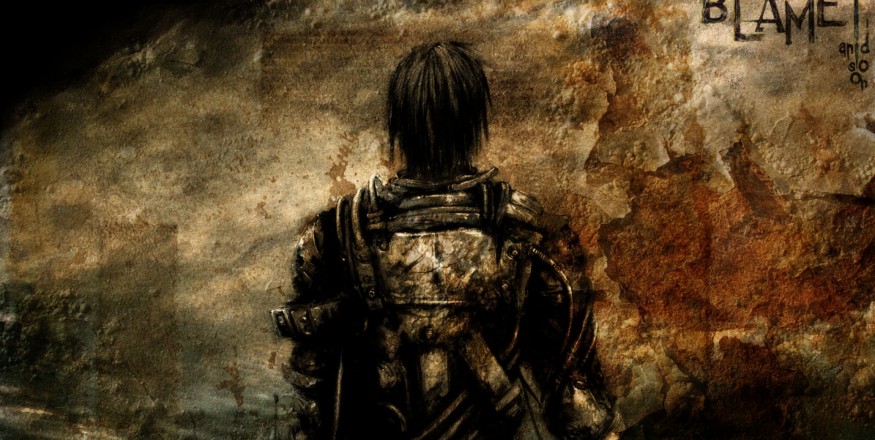The Lesser Key of Solomon, also known as Clavicula Salomonis Regis or Lemegeton, is an anonymous grimoire (or spell book) on demonology. It was compiled in the mid-17th century, mostly from materials a couple of centuries older. It is divided into five books—the Ars Goetia, Ars Theurgia-Goetia, Ars Paulina, Ars Almadel, and Ars Notoria.1102Please respect copyright.PENANAfk4BdZwZWU
Ars Goetia1102Please respect copyright.PENANAU69dt9Uhhw
The most obvious source for the Ars Goetia is Johann Weyer's Pseudomonarchia Daemonum in his De praestigiis daemonum. Weyer does not cite, and is unaware of, any other books in the Lemegeton, indicating that the Lemegeton was derived from his work, not the other way around. The order of the spirits was changed between the two, four additional spirits were added to the later work, and one spirit (Pruflas) was omitted. The omission of Pruflas, a mistake that also occurs in an edition of Pseudomonarchia Daemonum cited in Reginald Scot's The Discoverie of Witchcraft, indicates that the Ars Goetia could not have been compiled before 1570. Indeed, it appears that the Ars Goetia is more dependent upon Scot's translation of Weyer than Weyer's work in itself. Additionally, some material was used from Heinrich Cornelius Agrippa's Three Books of Occult Philosophy, the Heptameron by pseudo-Pietro d'Abano, and the Magical Calendar.
Weyer's Officium Spirituum, which is likely related to a 1583 manuscript titled The Office of Spirits, appears to have ultimately been an elaboration on a 15th-century manuscript titled Le Livre des Esperitz (of which 30 of its 47 spirits are nearly identical to spirits in the Ars Goetia).
In a slightly later copy made by Thomas Rudd, this portion was labelled "Liber Malorum Spirituum seu Goetia", and the seals and demons were paired with those of the 72 angels of the Shemhamphorasch, who were intended to protect the conjurer and control the demons he summoned. The angelic names and seals were derived from a manuscript by Blaise de Vigenère, whose papers were also used by Samuel Liddell MacGregor Mathers in his works for the Hermetic Order of the Golden Dawn. Rudd may have derived his copy of Liber Malorum Spirituum from a now-lost work by Johannes Trithemius, who taught Agrippa, who in turn taught Weyer.
This portion of the work was later translated by S. L. MacGregor Mathers and published by Aleister Crowley under the title The Book of the Goetia of Solomon the King. Crowley added some additional invocations previously unrelated to the original work, as well as essays describing the rituals as psychological exploration instead of demon summoning.1102Please respect copyright.PENANA58HkyDxo82
The Seventy-Two Demons
The demons' names (given below) are taken from the Ars Goetia, which differs in terms of number and ranking from the Pseudomonarchia Daemonum of Weyer. As a result of multiple translations, there are multiple spellings for some of the names, which are given in the articles concerning them.
1) King Bael1102Please respect copyright.PENANAysCbOdGCbZ
2) Duke Agares1102Please respect copyright.PENANA4RNxYSB0ne
3) Prince Vassago1102Please respect copyright.PENANAEO8aRQx9N9
4) Marquis Samigina1102Please respect copyright.PENANA9aQ0TqSGh6
5) President Marbas1102Please respect copyright.PENANAAZyUMYPjzL
6) Duke Valefor1102Please respect copyright.PENANAEWoAgyrdYy
7) Marquis Amon1102Please respect copyright.PENANAEAt24yZPew
8) Duke Barbatos1102Please respect copyright.PENANAqkbaGQo2Bi
9) King Paimon1102Please respect copyright.PENANA3TZcpslClu
10) President Buer1102Please respect copyright.PENANA2OpoATPDys
11) Duke Gusion1102Please respect copyright.PENANAGuJn99vLeW
12) Prince Sitri1102Please respect copyright.PENANABLJfHc0uQa
13) King Beleth1102Please respect copyright.PENANAEfpiR6pt0T
14) Marquis Leraje1102Please respect copyright.PENANALeBwT6nZpk
15) Duke Eligos1102Please respect copyright.PENANA1gsyo86zjK
16) Duke Zepar1102Please respect copyright.PENANArWOeoF48c7
17) Count/President Botis1102Please respect copyright.PENANAWjWRaBN9eq
18) Duke Bathin1102Please respect copyright.PENANAnAIvy7iGGD
19) Duke Sallos1102Please respect copyright.PENANATHia8N96B5
20) King Purson1102Please respect copyright.PENANAst6UtP5HoV
21) Count/President Marax1102Please respect copyright.PENANAGqV62qh427
22) Count/Prince Ipos1102Please respect copyright.PENANAXbTU4Qz3wE
23) Duke Aim1102Please respect copyright.PENANAQWycLit0oA
24) Marquis Naberius1102Please respect copyright.PENANAOSOsq1830s
25) Count/President Glasya-Labolas1102Please respect copyright.PENANAlBkOqIEOA6
26) Duke Buné1102Please respect copyright.PENANAhMd7sCCr6l
27) Marquis/Count Ronové1102Please respect copyright.PENANAegXWTjMTFM
28) Duke Berith1102Please respect copyright.PENANA9BKajH9PMN
29) Duke Astaroth1102Please respect copyright.PENANAC3Oa0tzoEX
30) Marquis Forneus1102Please respect copyright.PENANAlprxSFGr31
31) President Foras1102Please respect copyright.PENANAYXpOKKfXWh
32) King Asmoday1102Please respect copyright.PENANA5pnxw0c2Jm
33) Prince/President Gäap1102Please respect copyright.PENANAdC8mr2qwbA
34) Count Furfur1102Please respect copyright.PENANAfQH5Qq91de
35) Marquis Marchosias1102Please respect copyright.PENANAntSTlvKAoj
36) Prince Stolas1102Please respect copyright.PENANAL1aVhWja7m
37) Marquis Phenex1102Please respect copyright.PENANACbkSm3eUJg
38) Count Halphas1102Please respect copyright.PENANAktUzTUGOsO
39) President Malphas1102Please respect copyright.PENANAmIg6AYNFH5
40) Count Räum1102Please respect copyright.PENANASPGDttM7NG
41) Duke Focalor1102Please respect copyright.PENANAio5nmnv5Ig
42) Duke Vepar1102Please respect copyright.PENANAdNvg5CMkTh
43) Marquis Sabnock1102Please respect copyright.PENANAEdNSsrX6Lw
44) Marquis Shax1102Please respect copyright.PENANA773hXI2X1r
45) King/Count Viné1102Please respect copyright.PENANAWro3AhvaZH
46) Count Bifrons1102Please respect copyright.PENANAvXvaQxRn9I
47) Duke Vual1102Please respect copyright.PENANAGRt3fPtQ8W
48) President Haagenti1102Please respect copyright.PENANAXlW5XFVyPT
49) Duke Crocell1102Please respect copyright.PENANAUxShQYuXvf
50) Knight Furcas1102Please respect copyright.PENANAicvkYHXv8b
51) King Balam1102Please respect copyright.PENANAgXHj0REVMT
52) Duke Alloces1102Please respect copyright.PENANAwyQO5j18Wa
53) President Caim1102Please respect copyright.PENANAThQPrGPhl9
54) Duke/Count Murmur1102Please respect copyright.PENANA15IDqoUD1L
55) Prince Orobas1102Please respect copyright.PENANAofyrbLYETW
56) Duke Gremory1102Please respect copyright.PENANAXXs3BRqv5u
57) President Ose1102Please respect copyright.PENANAcG2rGzsNMG
58) President Amy1102Please respect copyright.PENANAvXJow3NTrv
59) Marquis Orias1102Please respect copyright.PENANAH2Lojz9eBm
60) Duke Vapula1102Please respect copyright.PENANAof05zzSF2P
61) King/President Zagan1102Please respect copyright.PENANAIT0zj0DeN6
62) President Valac1102Please respect copyright.PENANACUO4ge63ch
63) Marquis Andras1102Please respect copyright.PENANAoSq9AgGqhY
64) Duke Flauros1102Please respect copyright.PENANAR5x7ZYCHnR
65) Marquis Andrealphus1102Please respect copyright.PENANAL7a55kYGsa
66) Marquis Kimaris1102Please respect copyright.PENANAo8d3EccVxz
67) Duke Amdusias1102Please respect copyright.PENANAC1kJ1yier6
68) King Belial1102Please respect copyright.PENANAeK9sxI7XQ9
69) Marquis Decarabia1102Please respect copyright.PENANAjHIyuOMjYb
70) Prince Seere1102Please respect copyright.PENANAcxdpu1PSYC
71) Duke Dantalion1102Please respect copyright.PENANAMqaELUCiRP
72) Count Andromalius
The demons are described as being commanded by four kings of the cardinal directions: Amaymon (East), Corson (West), Ziminiar (North), and Gaap (South). A footnote in one variant edition instead lists them as Oriens or Uriens, Paymon or Paymonia, Ariton or Egyn, and Amaymon or Amaimon, alternatively known as Samael, Azazel, Azael, and Mahazael (purportedly their preferred rabbinic names).[10] Agrippa's Occult Philosophy lists the kings of the cardinal directions as Urieus (East), Amaymon (South), Paymon (West), and Egin (North); again providing the alternate names Samuel (i.e. Samael), Azazel, Azael, and Mahazuel. The Magical Calendar lists them as Bael, Moymon, Poymon, and Egin, though Peterson notes that some variant editions instead list '"Asmodel in the East, Amaymon in the South, Paymon in the West, and Aegym in the North"; "Oriens, Paymon, Egyn, and Amaymon"; or "Amodeo [sic] (king of the East), Paymon (king of the West), Egion (king of the North), and Maimon."1102Please respect copyright.PENANA3gVx3J0Dgz
Ars Theurgia Goetia1102Please respect copyright.PENANAT90SWFDgeh
The Ars Theurgia Goetia mostly derives from Trithemius's Steganographia, though the seals and order for the spirits are different due to corrupted transmission via manuscript. Rituals not found in Steganographia were added, in some ways conflicting with similar rituals found in the Ars Goetia and Ars Paulina. Most of the spirits summoned are tied to points on a compass, four Emperors tied to the cardinal points (Carnesiel in the East, Amenadiel in the West, Demoriel in the North and Caspiel in the South), sixteen Dukes tied to cardinal points, inter-cardinal points, additional directions between those. There are an additional eleven Wandering Princes, totaling thirty one spirit leaders who each rule several to a few dozen spirits.1102Please respect copyright.PENANAvaSTe8Sjwp
1102Please respect copyright.PENANAFxPyE5M3gB
Ars Paulina1102Please respect copyright.PENANA15sWZUt656
Derived from book two of Trithemius's Steganographia and from portions of the Heptameron, but purportedly delivered by Paul the Apostle instead of (as claimed by Trithemius) Raziel. Elements from The Magical Calendar, astrological seals by Robert Turner's 1656 translation of Paracelsus's Archidoxes of Magic, and repeated mentions of guns and the year 1641 indicate that this portion was written in the later half of the seventeenth century. Traditions of Paul communicating with heavenly powers are almost as old as Christianity itself, as seen in some interpretations of 2 Corinthians 12:2-4 and the apocryphal Apocalypse of Paul. The Ars Paulina is in turn divided into two books, the first detailing twenty-four angels aligned with the twenty-four hours of the day, the second (derived more from the Heptameron) detailing the 360 spirits of the degrees of the zodiac.1102Please respect copyright.PENANA3hyHvNxnPX
Ars Almadel1102Please respect copyright.PENANAs84fbAklds
Mentioned by Trithemius and Weyer, the latter of whom claimed an Arabic origin for the work. A 15th-century copy is attested to by Robert Turner, and Hebrew copies were discovered in the 20th century. The Ars Almadel instructs the magician on how to create a wax tablet with specific designs intended to contact angels via scrying.1102Please respect copyright.PENANAELXf8IxRw4
Ars Notoria1102Please respect copyright.PENANA2L8TMvTijQ
The oldest known portion of the Lemegeton, the Ars Notoria (or Notory Art) was first mentioned by Michael Scot in 1236 (and thus was written earlier). The Ars Notoria contains a series of prayers (related to those in The Sworn Book of Honorius) intended to grant eidetic memory and instantaneous learning to the magician. Some copies and editions of the Lemegeton omit this work entirely; A. E. Waite ignores it completely when describing the Lemegeton. It is also known as the Ars Nova.1102Please respect copyright.PENANAjNZmhS61k1
1102Please respect copyright.PENANAlrO0sCfCN2
It has also been said to be the origin of Pandora's box and where the seven deadly sins were born.
1 Gula (gluttony)1102Please respect copyright.PENANAE11nOQ6tHJ
2 Luxuria (lust, fornication)1102Please respect copyright.PENANAttERUjdj30
3 Avaritia (avarice/greed)1102Please respect copyright.PENANAQMn7vSARrV
4 Superbia (pride, hubris)1102Please respect copyright.PENANA1yUEf6OXc0
5 Invidia (Envy)1102Please respect copyright.PENANA4BrNKgMaTS
6 Ira (wrath)1102Please respect copyright.PENANARykx6bjl8L
7 Acedia (sloth)1102Please respect copyright.PENANAqPnstb9GN7
If you look any further into it, beware your surrounding... You will uncover, the truth.
ns216.73.216.197da2





















